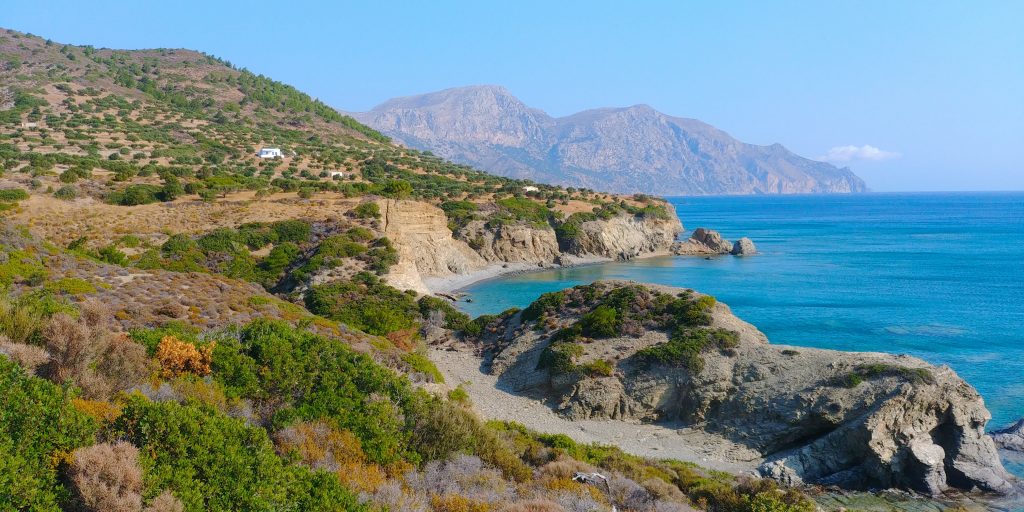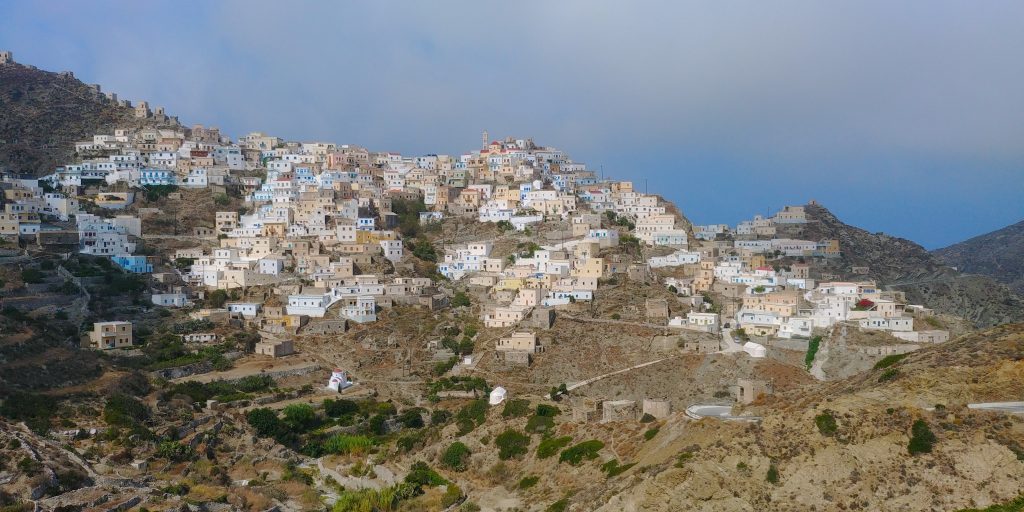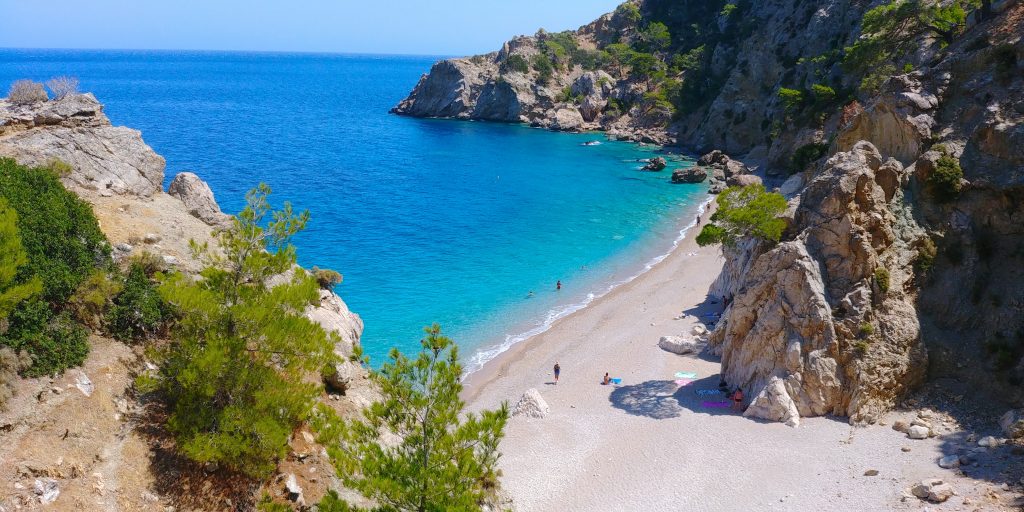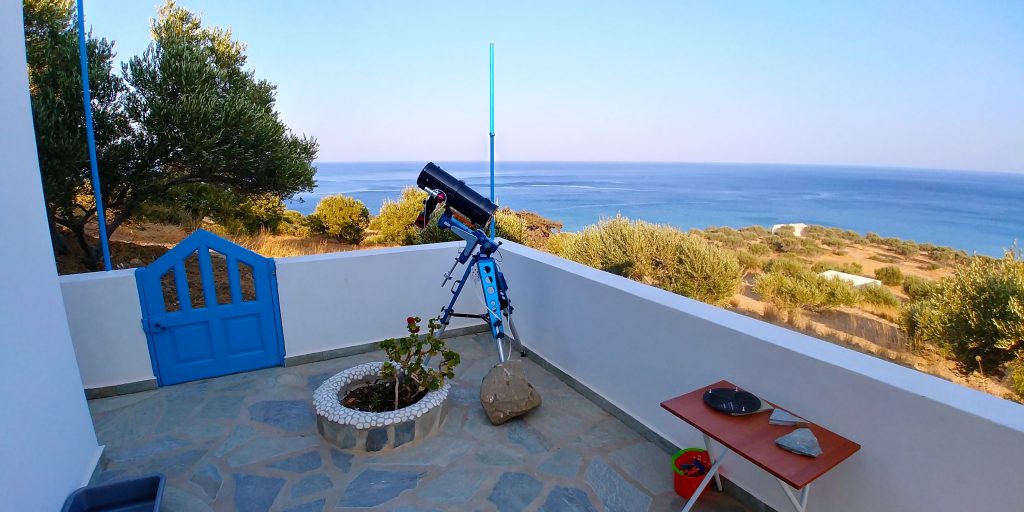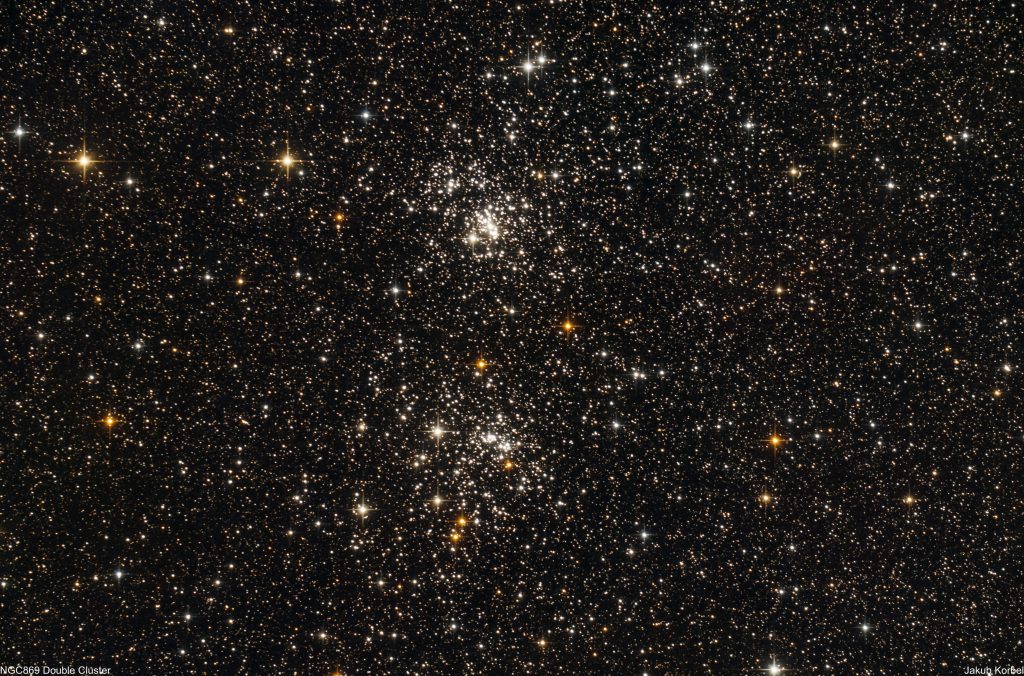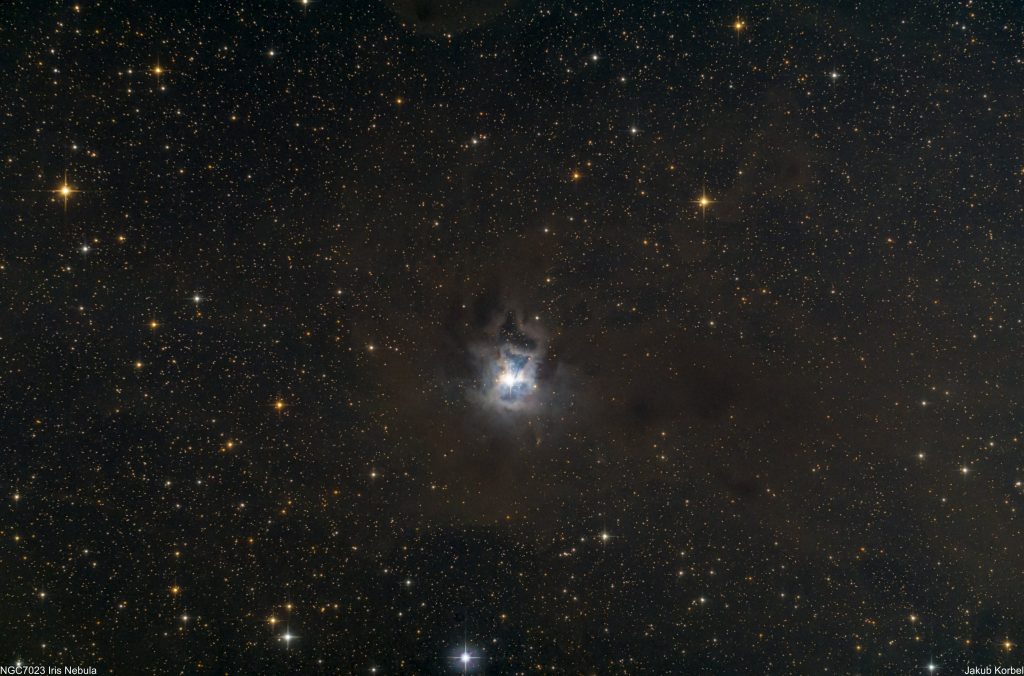Like every summer, I packed the telescope, mount, camera and many accessories and flew to Greece. This time we went to Karpathos, the island not spoiled by massive tourism and light pollution. Long story short, the skies were amazing, but every single night, except one, was extremely windy. It was a torture – to see millions of stars and not be able to photograph them. There is no surprise that Karpathos is beloved by windsurfers and kite surfers. In the end I captured only the Iris Nebula and the Double Cluster. I talked to locals and they told me that the wind should stop at the end of September, so probably I picked the wrong time.
On the other hand I was able to do a wide angle astrophotography of the Milky Way. SQM reached 21.5, galactic core was so bright and I think the photos of the Milky Way are quite decent. This time I changed the setup and purchased Canon EOS 6D, which is one of the best cameras for this purpose. Moreover, there are many second hand 6Ds, because mirrorless mania arrived. 6D combined with Samyang 14 mm f2.8 offers excellent performance for this purpose.
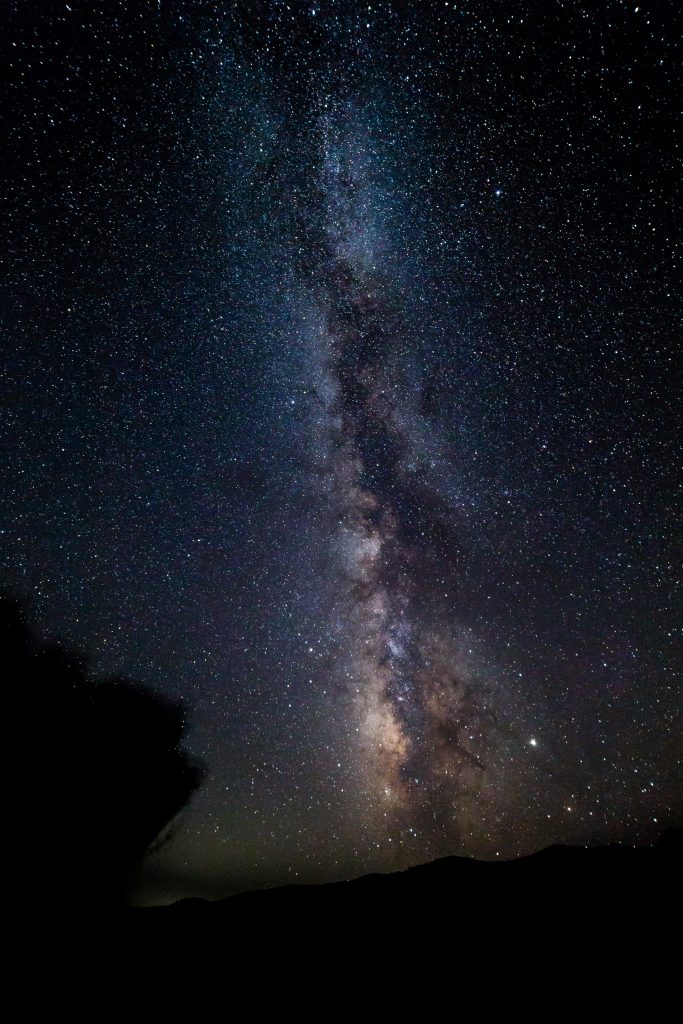
Karpathos offers other beauties, for example very beautiful beaches, mountains, delicious food friendly people and many more.
